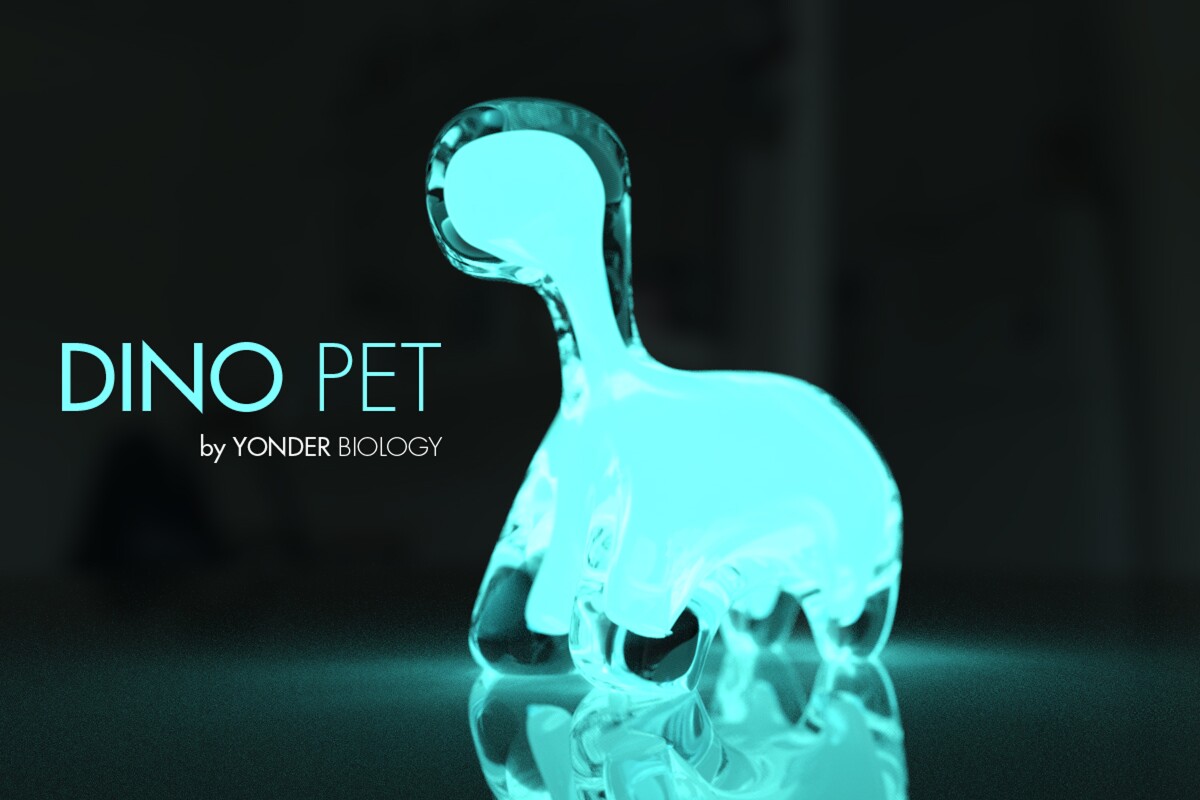Yonder Biology, a company typically known for making colorful prints based on a person's DNA, is aiming to teach children about biology with its latest mixture of art and science. The company's new Dino Pet is a clear plastic dinosaur filled with bioluminescent algae that glow in the dark, so it can act as night light as well as a fun learning tool.
It may be shaped like a cartoonish Apatosaurus, but the original inspiration for the Dino Pet's name comes from the dinoflagellates it contains. Specifically, this interactive toy gets its glow from the Pyrocystis fusiformis species of marine algae, which when shaken emit a blue light for a short time. A bottle of algae may sound like a strange pet, but the designers have noted that the dinoflagellates are especially suited to children, since they're easy to take care of, non-toxic, and will even glow brighter to indicate when they're being properly cared for.
To produce its living night light, Yonder Biology first developed a method for growing about 300 liters (79 US gal) of dinoflagellates each year, which ensures it can maintain a steady supply. The company also settled on a polyethylene-based plastic for the container, which the designers found produced the sharpest glowing effect. Each Dino Pet has a volume of about 500 ml (17 oz), which can hold a mixture of dinoflagellates, salt water, and nutrients. The designers have made 3D-printed prototypes that are mostly enclosed, but the final version of the container will have a non-leaking port for adding nutrients or refilling it with more algae.

Caring for the Dino Pet is simple enough for a child to manage while learning about bioluminescence in the process. The dinoflagellates just need need to be left in a room with either a low-watt bulb or indirect sunlight for about 10-12 hours and kept at a temperature between 65 and 75° F (18 to 24° C). With just light, they'll usually have a lifespan of one to three months, but this can be extended indefinitely by adding nutrients (or Dino Food) to the container and regularly changing the water. Yonder Biology plans to sell the Dino Food for US$10 per liter, which should be enough to keep the algae fed for four to six months.
The company recently launched a Kickstarter campaign to raise the US$50,000 needed to begin manufacturing the Dino Pet container and mass-producing enough dinoflagellates to meet the expected demand. Anyone who contributes $40 or more can sign up to receive one of their own Dino Pets, which are expected to ship in April 2014. To make sure the dinoflagellates survive the trip, the company will ship them through an expedited mail service and has offered to replace any orders that do not arrive alive and well for free. For an extra $20, backers will also receive an illustrated children's book that explains the process of bioluminescence.
For now though, you can watch the video below to see how the first Dino Pet was created.
Source: Kickstarter, Yonder Biology











